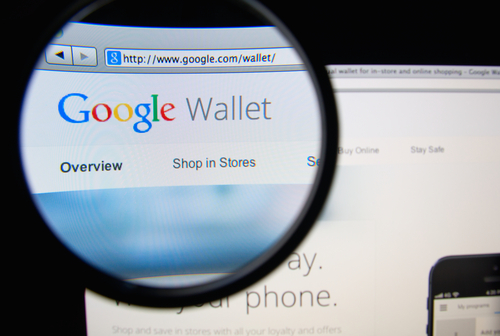Google’s Payments and Retail Focus

Investing in its own innovations like Google Express, Google wallet and creating a mobile payment focused mindset were among the highlights of Google’s third-quarter earnings report as it revealed Thursday (Oct. 16) that it’s revenue increased 20 percent to $16.5 billion.
Although three key retailers announced this week that they’ve changed their minds on moving forward with Google Express — the same-day-delivery service — Google Chief Business Officer Omid Kordestani said that he is confident the demand for Google Express is high. Google plans to scale its vision involves increasing efficiency and making its products more attractive to both merchants and consumers.
“Innovation is a messy process and especially with Google Express here. There is a lot of understanding that we need to have on improving efficiency in the logistics process, trying to find price points that shoppers find attractive. And our goal is really to help the over 35 merchant partners succeed and reach their customers. And I’m a user of it and I am really impressed by how much time it saves. I see the cars running around the city around me. And I think our goal is really to take it a step at a time and see the success, understand the logistical operations, how much it costs us to do this and can we deliver this basically in a successful way,” he said.
Google CFO Patrick Pichette offered a practical response to those retailers leaving the program: “And on the partners, I mean we’re really thrilled to have the partners we have. You can expect as we kind of grow through this that we have a few coming in, a few coming out, but overall very, very pleased with the trajectory there.”
Strictly looking at an earnings standpoint, Google reported a net income of $2.81 billion, compared to $2.97 for third-quarter of 2013. Google’s sites generated revenues of $11.25 billion, or 68 percent of total revenues, in the third quarter of 2014. This represents a 20 percent increase over third quarter of 2013 sites revenues of $9.38 billion.
Amazon, which Google reported Monday (Oct. 13) is its biggest threat, already has an infrastructure in place. Pichette recognized that Google must tackle must achieve a way to scale its delivery in order to achieve efficiency centralization by having the right tools. Kordestani said that Gooogle must embrace mobile payments system in a broad, multi-faceted approach to compete in the digital wallet sphere. Google executives have admitted its rollout of Google Wallet had flaws and Kordestani emphasized that its team is still working to seeing if Google should tackle the project alone or find another partnership to work the Android product.
“I think we’re going to continue to be open here. So we are trying to get it right and innovating on multiple fronts, as I mentioned earlier. And if partnering makes sense, we’ll take a look at it, as well. And the goal is really to provide this very seamless experience for the users and then get the merchant adoption and hopefully get this right. I’m certainly delighted every time I use this and it works. And I think if we can all get the ecosystem right and there are multiple players in it and partnerships that are making it happen, we’re definitely open to that,” he said.
For Google Express, it will be approached one step at a time to ensure the right channels or partners are tapped, but when it comes to staying current in the mobile payment field, Google leaders have acknowledged that embracing NFC adoption alongside its merchants is critical to achieving Google’s goals. Reducing friction with Google Wallet starts with making sure merchants are equipped with the right tools.
“I think our goal here is really achieving mass merchant adoption, so the availability of these NFC devices is about that and also making it easier for consumers to replace their wallets with their smartphones hopefully more and more over time. So reducing friction in everyday shopping experiences is how we approach it and the focus on the user and we’re really developing a fully functional payment system. …It’s this two-fronted focus on merchant adoption and removing the friction for users,” Kordestani said.
